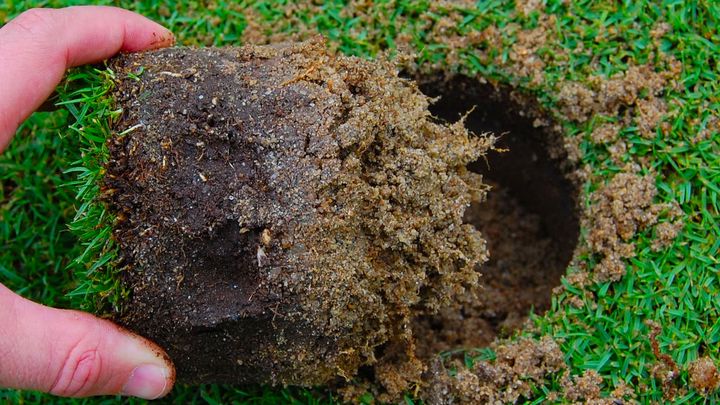How much organic matter is too much?
 Managing organic material in sand rootzones is important to keep the surface conditions at the desired level.
Managing organic material in sand rootzones is important to keep the surface conditions at the desired level.I was teaching a seminar about the distinction between soil organic matter (humus) and total organic material, and how to make use of those test results, when this question was posed:
How much organic matter (or total organic material) is too much? When is the test result too high?
My full answer to that question is that you need to figure out that number for your site and conditions yourself, using the logic explained here.
But that’s not the answer I gave to this question at the seminar. For someone who wants to have some numbers in mind, these are the test result numbers that appear high to me. I don’t mean to imply that they are too high. What these values indicate to me is that the test results are higher than a lot of other soil tests, and that’s something to be aware of. Remember, my full answer is a different one—that the “too much” answer is one that these tests can be used to answer in a site-specific way, and not by me, but by you.
With all those disclaimers out of the way, here are the numbers. These are for golf course putting green turf grown in sand rootzones.1
Higher than 1.6% soil organic matter on a 10 cm depth (4 inches) soil test from a putting green sand rootzone puts the sample into the top quartile (higher than at least 75% of other putting green samples). When that test is at 1.6% or higher, it doesn’t necessarily mean the number is too high, but it’s noticeable to me that the test result is higher than usual.
9% total organic material at the 0 to 2 cm depth (OM2) is the 75th percentile across all species. If the OM2 is higher than 9%, you can be aware that it is higher than most other greens. I reiterate that doesn’t mean it is too high. But if you want a threshold number to be aware of, 9% is reasonable.
6% total organic material in the top 2 inches of the rootzone also puts a sample above the 75th percentile.
I break this down in a lot more detail by species and by type of turfgrass surface in ATC’s soil test reports. ↩︎